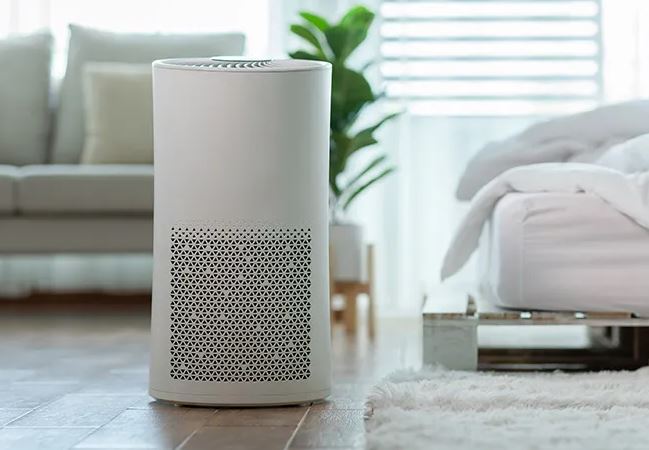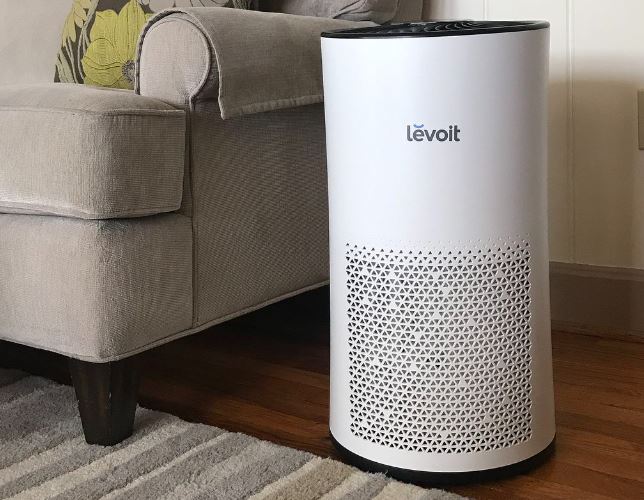In an era of heightened health awareness, the air we breathe in has become a prominent focus for individuals across the globe. With rising pollution levels and a deeper insight of the effects of indoor pollutants on our health, it's no surprise that the air purifier industry is experiencing tremendous growth.
Air purifiers are appliances that clean the air of pollutants in a given area, promoting healthier indoor air. They are especially advantageous for those with allergies, asthma, or respiratory concerns as they can drastically decrease the levels of allergens, pollutants, and irritants in the air. Even healthy individuals can rely on the added protection of air purifiers, as they give added assurance and protect against airborne pathogens.
This guide will dive deep into the intriguing world of air purification, discussing the perks they offer, the different types available, essential factors when making a purchasing decision, and optimizing your purifier's performance. By the end, you should have a thorough grasp of air purifiers and be able to decide confidently about whether investing in one is the right choice for you and your family.

Understanding Air Pollutants and Their Impact on Health
To understand why air purifiers are essential, it's key to comprehending the types of pollutants they target and the potential consequences of prolonged exposure.
Indoor air pollutants can be generally classified into the following three categories:
- Particulate Matter: This includes solid particles and liquid droplets suspended in the air. Examples include smoke, dust, pollen, pet dander, and mold spores. Particulate matter can cause respiratory issues and cause allergic flare-ups.
- VOCs: A Concern for Indoor Air: VOCs are gaseous compounds released from solids and liquids. Sources of VOCs include cleaning agents, paints, aerosol sprays, pesticides, and similar products. Exposure to VOCs can lead to eye, nose, and throat irritation, headaches, and nausea.
- Understanding Biological Contaminants: These include various microorganisms, including bacteria, viruses, mold, and mildew. They can cause a range of health issues, from mild allergic reactions to severe infections.
The consequences of exposure on human health can vary significantly. For people with respiratory issues or a vulnerable immune system, exposure to indoor air pollutants can lead to serious health issues. Even those in good health, chronic exposure to certain pollutants can contribute to the development of respiratory issues and other health problems over time.

How Air Purifiers Work
Air purifiers use a combination of physical and chemical processes to capture and remove pollutants from the air. Understanding the basic mechanisms employed by purifiers will help you appreciate their effectiveness and the array of models on the market.
Here are the core processes and cutting-edge technologies used in air purifiers:
- Filtration Excellence: This is the most common method used in air purifiers. It involves using filters to trap particles as air is passed through the filtration system. The filtration media varies, each designed to capture specific types of particles. For example:
- Pre-filters: These are usually the initial barrier, trapping bigger contaminants like dust and hair.
- HEPA (High-Efficiency Particulate Air) filters: HEPA filters are exceptionally efficient at trapping ultrafine particles, including dust mites, pollen, bacteria, and viruses. To be labeled a bona fide HEPA filter, it must trap a minimum of 99.97% of particles down to 0.3 microns in size.
- charcoal filtration: These filters are designed to adsorb odors, VOCs, and gaseous pollutants.
- Ionizers: Ionizers use electrical charges to create ions with a negative charge, which latch onto airborne particles. The charged particles then stick to nearby surfaces or are attracted back to the purifier.
- Ozone Generators: Some air purifiers use ozone, a powerful oxidant, to break down pollutants. While effective, ozone can also be harmful to human health so these types of purifiers should be used with caution and only in unoccupied spaces.
- Ultraviolet (UV) Light: UV light can be used to destroy biological contaminants like bacteria, viruses, and mold spores. UV light is often used in combination with a filter to eliminate particles, while UV light ensures any remaining biological contaminants are destroyed.
Choosing the Right Air Purifier
With a wide array of options available, selecting the right air purifier can be a challenging endeavor. It's important to consider a range of criteria to ensure you make the right choice for your unique requirements and space.
Here are some key considerations:
- Sizing Up the Room: Air purifiers are typically designed for specific areas, so it's important to choose a model that can adequately cater to the room size. Most purifiers will list a maximum room coverage or CADR, which indicates the volume of filtered air delivered per minute.
- Targeted Pollutants: Identify the types of pollutants you want to target. If you suffer from allergies, look for a purifier with a HEPA filter. For eliminating odors, consider a model with a carbon-based filter. If you're concerned about pathogenic microorganisms, a purifier with UV light technology might be best.
- Noise Level: Air purifiers can produce different noise levels, so if you plan to use it in a serene environment, look for models with a quiet mode for undisturbed rest.
- Maintaining Performance: Consider the ongoing costs and maintenance requirements of the purifier. HEPA filters, for example, typically need to be replaced every 6-12 months, depending on use and environmental factors. Include filter replacement costs in your calculations when making your choice.
- Additional Features: Many purifiers offer intelligent features like wireless connectivity, air quality sensors, and smart modes, allowing convenient remote access and monitoring. These features can improve your purifier's performance and ease of use.
Maximizing the Benefits of Your Air Purifier
Once you've invested in an air purifier and set it up, there are several things you can do to ensure it operates at peak performance and delivers the optimal results:
- Place it in the Right Location: Position your purifier in an central location, free from obstacles, to ensure optimal airflow. Avoid placing it near external openings as drafts can disrupt the purifier's effectiveness.
- Consistent Use: For the best results, it's recommended to run your purifier regularly. Many models have energy-saving features or smart modes that respond to air quality changes, so you can maintain clean air without running up a huge energy bill.
- Filter Maintenance: Regularly adhere to the recommended filter replacement schedule. Over time, filters become clogged with particles, reducing the purifier's efficiency. Set a reminder for filter changes so you don't forget.
- Reducing Indoor Contaminants: Alongside using an air purifier, take steps to limit indoor contaminants. This could include regularly vacuuming and dusting, using natural cleaning products, and minimizing the use of strong chemicals or aerosols.